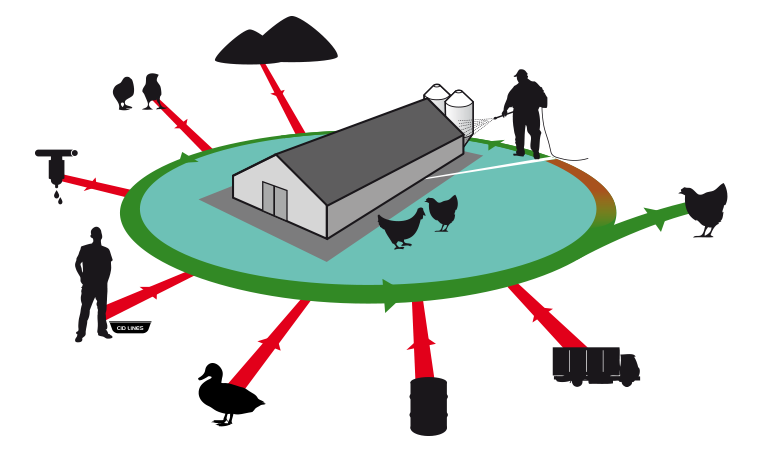Your shopping cart is empty!
MENU
- +
-
POULTRY
+
-
PIG FARMING
+
-
RUMINANTS
+
- PET +
- HORSES +
- FEED INDUSTRY +

A small risk repeated a 1000 times becomes a big risk!
Biosecurity is not about targeting on one or two possible contamination risk vectors and hoping you have made the right choice. Biosecurity is about controlling and addressing a whole series of little critical points.

External biosecurity refers to those measures taken to keep disease agents out of populations, herds, or groups of animals where they do not already exist. To truly assess how risk full a certain contamination route is on a farm, you need not only to consider how big the chance is of that vector (for example: feed delivery, transport entering the farm, people movements, etc) to contaminate your farm. You also have to take in the account the frequency of that contamination route on the farm. In other words, how many times that risk is taken per year.
The true risk can be expressed by using following probability formula: P = 1-(1-p)n p (risk of transmission route) = 0.1%. The chance that this transmission route will actually cause a real danger or contamination on the farm is 1 out of 1000! n (frequency of transmission route) = 50. So this very small risk is taken weekly.
The true risk of contamination on your farm by that specific transmission route will be P= 1 –(1- 0.001)50 => 4.88%!